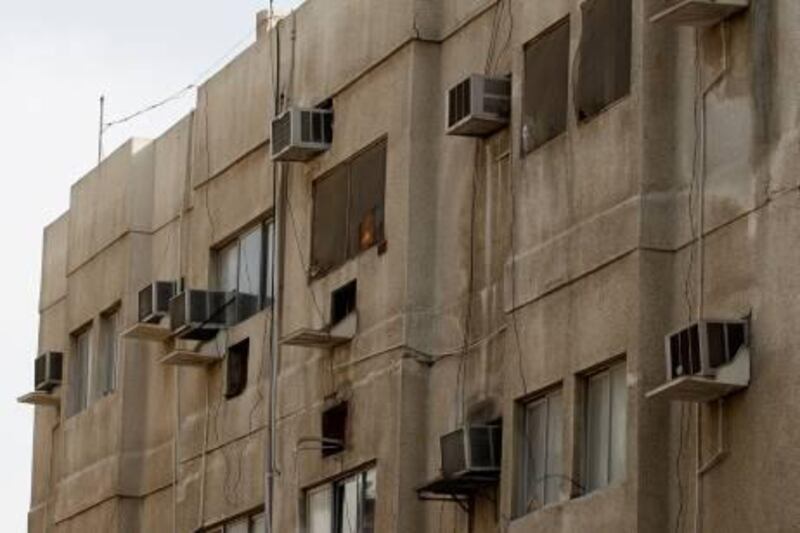ABU DHABI // With energy prices climbing and some emirates facing electricity shortages again this summer, experts have questioned whether the UAE should invest in large, centralised plants for its cooling needs.
The issue was at the heart of debates at the Climate Control Summit in Abu Dhabi where, for two days, industry experts compared the concept known as district cooling to traditional systems used in single buildings.
Air conditioning accounts for up to 70 per cent of the country's electricity. Ensuring homes and offices are cooled as efficiently as possible is a national priority.
District cooling chills the water needed for air conditioning in a central plant, then uses it to cool several buildings or an entire development.
District cooling systems are already in operation at several developments across Abu Dhabi and Dubai emirates.
The process is more efficient due to economies of scale, said George Berbari, the chief executive of the engineering firm DC Pro, and an advocate of district cooling. "The economy of scale itself allows us to hire better designers, better contractors and better operators," said Mr Berbari.
A district cooling plant uses up to 0.95 kilowatts of electricity per tonne of cooling, compared to a stand-alone system that takes up to 1.6 kilowatts per tonne, he said.
Performance can be further enhanced by a practice known as thermal storage, which chills water and stores it for later, when there is higher demand.
Energy savings are compounded when domestic hot water, electricity and cooling are produced together at the district plant.
But while district cooling has the potential for significant energy savings, the reality can be different, said Salah Nezar, the technical core team manager at Qatar Project Management. "On paper, district cooling is more healthy for society," he said. "But the reality is that not all district cooling plants are meeting the energy efficiency they are theoretically supposed to."
Plants designed to handle huge air conditioning loads often worked at less than half capacity, creating financial problems for the district cooling providers and for end-users who faced large air conditioning charges, said Mr Nezar.
Mr Berbari acknowledged the problem, saying the UAE was using less than half of its two million tonnes of installed district cooling capacity, with the slowdown in property development leading to reduced demand.
"This is also a combination of lack of knowledge and experience on the part of the [cooling] provider, and the master developer feeding them wrong information and some bad practices with businesses that build big systems for commercial interest," he said.
However, air conditioning systems in individual buildings can also be too big, he said."The same case is happening with the stand-alone industry, which has eight million tonnes actual capacity, while the installed capacity is close to 16 million," said Mr Berbari.
Representatives at the event were split into two camps. But there would never be a simple choice between one or the other, said B Surendar, the editor of an industry magazine, Climate Control Middle East, and organiser of the event.
"This entire summit was not meant to pit one camp against the other," he said. "End users are looking for air conditioning that can provide them with cooling comfort and that is reliable and affordable. Energy efficiency is a fourth parameter that needs to come into the equation."
Greater government intervention was required, said delegates. "The practice is affected by short-term profit," said Mr Nezar. "The real estate industry needs to shift from looking at short-term profit and include the life cycle costs of buildings. The Government can encourage innovation by providing incentives."






